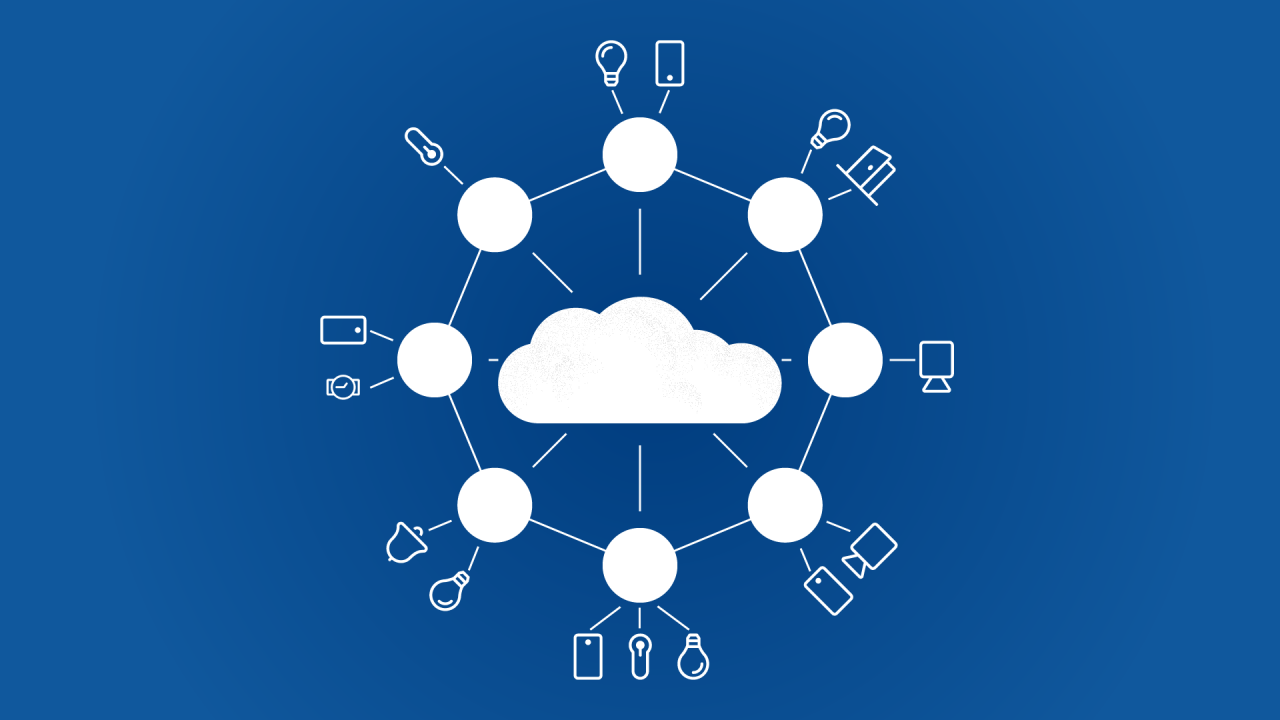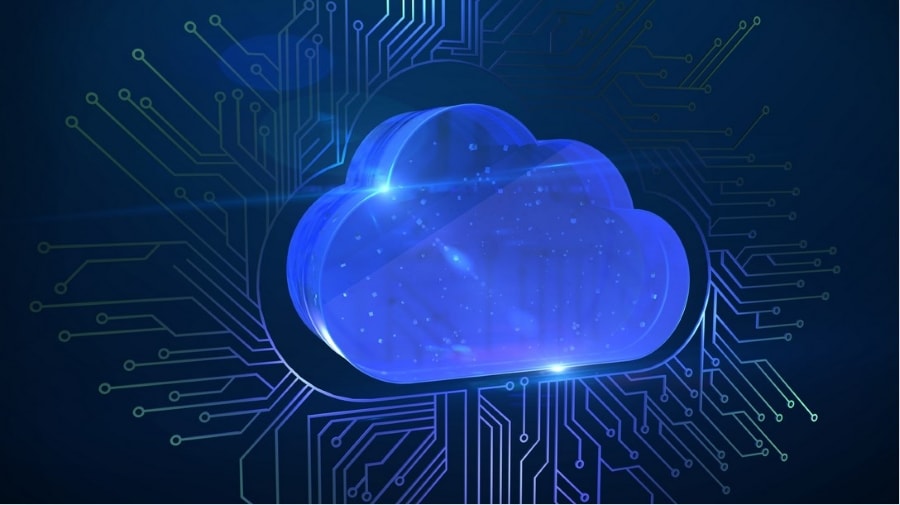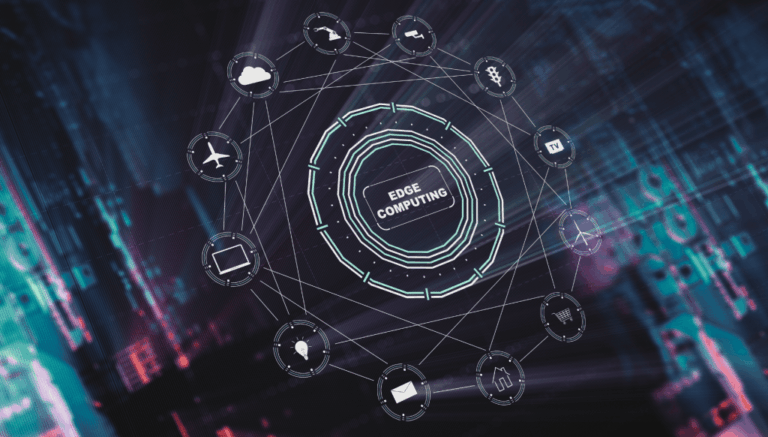The digital frontier is rapidly expanding beyond the traditional confines of centralized data centers, bringing computation and data storage closer to where it’s actually generated and consumed. This paradigm shift is known as edge computing, and it’s fundamentally reshaping how we interact with technology, process information, and unlock real-time intelligence. No longer just a theoretical concept, edge computing is now a critical component of the modern IT landscape, poised to revolutionize industries from manufacturing and healthcare to transportation and smart cities.
The Dawn of Decentralization

For decades, the dominant model for computing involved sending all data to a central cloud or data center for processing. While effective for many applications, this centralized approach faces growing limitations in our increasingly interconnected world. The sheer volume of data generated by billions of connected devices, coupled with the demand for immediate insights and actions, has created an imperative for change.
Edge computing addresses these challenges head-on by performing data processing at or near the source of data generation, rather than relying solely on distant cloud servers. This drastically reduces latency, conserves bandwidth, enhances security, and enables new categories of applications that demand instantaneous responses. It’s not about replacing the cloud, but rather extending its capabilities, creating a more efficient, resilient, and intelligent distributed computing fabric.
Core Principles and Architecture of Edge Computing
Understanding edge computing requires delving into its fundamental principles and architectural components. It’s a diverse ecosystem, not a single technology.
A. Proximity and Latency Reduction:
- Data Processing at the Source: The core idea is to process data as close as possible to the point where it’s created or needed. This could be on a sensor, a smart camera, a factory robot, a retail store server, or even within a vehicle.
- Minimizing Round-Trip Time (RTT): By reducing the physical distance data has to travel, edge computing slashes latency. This is crucial for applications where even milliseconds matter, such as autonomous driving, real-time industrial control systems, or surgical robotics. In these scenarios, sending data to a distant cloud and waiting for a response is simply not viable.
- Local Decision Making: Edge devices and local edge servers are empowered to make decisions autonomously, based on real-time data, without constant reliance on cloud connectivity. This enhances operational continuity, especially in environments with intermittent network access.
B. Bandwidth Optimization and Cost Efficiency:
- Filtering and Aggregation at the Edge: IoT devices can generate vast amounts of raw data, much of which may be redundant, irrelevant, or requires immediate local action. Edge devices can pre-process, filter, and aggregate this data, sending only relevant insights or processed information to the cloud. This significantly reduces the volume of data transmitted over networks.
- Reduced Network Congestion: Less data traveling across the network means less congestion, leading to more reliable and faster communication for all connected devices. This also reduces the strain on backbone networks and cloud ingress points.
- Lower Data Transfer Costs: Cloud providers often charge for data egress (data leaving the cloud). By processing and storing more data locally at the edge, organizations can significantly reduce these transfer costs, leading to a more economical overall computing model.
C. Enhanced Security and Privacy:
- Local Data Control: Keeping sensitive data local at the edge can enhance privacy and simplify compliance with data residency regulations (e.g., GDPR, CCPA). Data can be processed and analyzed on-site without ever leaving the premises.
- Reduced Attack Surface: By processing data locally and only sending aggregated or anonymized insights to the cloud, the overall attack surface for sensitive information can be reduced. Data is less exposed during transit.
- Isolated Operations: In cases where internet connectivity is intermittent or non-existent, edge systems can operate in isolated environments, maintaining critical functions even if the connection to the central cloud is lost. This is vital for critical infrastructure, military applications, or remote industrial sites.
D. Resilience and Reliability:
- Operational Continuity: Edge systems can continue to function and make critical decisions even if the connection to the central cloud is temporarily lost or compromised. This ensures business continuity for critical processes that cannot afford downtime.
- Distributed Redundancy: By distributing processing power and data storage across multiple edge locations, the overall system becomes more resilient. The failure of one edge device or location does not necessarily impact the entire operation.
Key Components of an Edge Ecosystem
An edge computing ecosystem comprises various layers and components working in concert:
A. Edge Devices:
- Sensors and Actuators: The smallest components, collecting data (temperature, pressure, image, sound) and performing actions. Examples include smart meters, security cameras, industrial sensors, and smart home devices.
- Embedded Devices: More sophisticated devices with embedded processors, capable of some local processing. Think of smart appliances, wearable technology, or specialized industrial controllers.
- Mobile Devices: Smartphones, tablets, and other portable devices that generate and process data at the very edge of the network.
B. Edge Gateways:
- Connectivity Hubs: These devices act as intermediaries between edge devices and the deeper edge or cloud. They collect data from multiple edge devices, perform initial processing, filtering, and aggregation, and provide secure communication channels.
- Protocol Translation: Edge gateways often handle protocol translation, allowing diverse IoT devices to communicate effectively with each other and with cloud services.
- Local Processing and Analytics: Many gateways have sufficient compute power to run basic analytics, AI inference models, and real-time control logic.
C. Edge Servers/Micro Data Centers:
- Local Compute Power: These are small-scale data centers deployed at a facility, factory, retail store, or cell tower. They offer significant compute, storage, and networking capabilities, enabling complex AI model inference, data aggregation from hundreds of devices, and running critical local applications.
- Low Latency Applications: Ideal for applications requiring very low latency that cannot tolerate round trips to a regional data center or public cloud.
- Containerized Workloads: Often leverage containerization (e.g., Docker, Kubernetes) to efficiently deploy and manage applications in resource-constrained or diverse edge environments.
D. Edge Orchestration and Management Platforms:
- Centralized Control: While processing is distributed, the management and orchestration of edge devices, gateways, and servers typically remain centralized, often managed from the public cloud or a hybrid cloud environment.
- Remote Deployment and Updates: These platforms enable remote deployment of applications, software updates, security patches, and AI models to thousands or millions of edge devices, ensuring consistency and manageability at scale.
- Monitoring and Analytics: Provide comprehensive visibility into the health, performance, and security of the entire edge infrastructure, enabling proactive issue resolution and optimization.
Transformative Applications and Use Cases

Edge computing is not just a technology; it’s an enabler of entirely new possibilities across a wide spectrum of industries.
A. Industrial IoT (IIoT) and Smart Manufacturing:
- Real-Time Anomaly Detection: Sensors on factory equipment generate massive amounts of data. Edge computing allows for real-time analysis of this data to detect anomalies, predict machinery failures (predictive maintenance), and prevent costly downtime, often before a human operator would notice.
- Automated Quality Control: High-speed cameras and AI models at the edge can inspect products on an assembly line for defects with superhuman speed and accuracy, rejecting faulty items instantly.
- Robotics and Autonomous Systems: Edge compute provides the local intelligence for industrial robots, automated guided vehicles (AGVs), and collaborative robots (cobots) to navigate, interact with their environment, and make real-time decisions on the factory floor.
B. Autonomous Vehicles and Transportation:
- Real-Time Decision Making: Self-driving cars generate terabytes of sensor data per hour. Edge computing within the vehicle processes this data instantly for perception (understanding the environment), prediction (forecasting other road users’ behavior), and planning (navigating safely), enabling critical real-time decisions without cloud dependency.
- Vehicle-to-Everything (V2X) Communication: Edge compute enables V2X communication, allowing vehicles to communicate with each other (V2V), with infrastructure (V2I), and with pedestrians (V2P) to enhance safety and traffic flow.
- Traffic Management and Smart City Solutions: Edge devices (smart cameras, sensors) in cities can monitor traffic patterns, pedestrian flows, and air quality, with local edge servers analyzing this data to optimize traffic lights, manage public transport, and respond to emergencies in real-time.
C. Healthcare and Medical Devices:
- Remote Patient Monitoring: Wearable devices and home sensors collect vital patient data. Edge computing can process this data locally, alerting healthcare providers only when critical thresholds are crossed, enabling proactive intervention and reducing the burden on central systems.
- Real-Time Medical Imaging Analysis: AI models running on edge devices in hospitals can rapidly analyze medical images (X-rays, MRIs) to assist in diagnosis, especially in time-sensitive situations like stroke detection.
- Smart Hospitals and Clinics: Edge devices monitor patient flow, equipment status, and environmental conditions to optimize operations, improve patient care, and enhance security.
D. Retail and Smart Stores:
- Personalized Customer Experiences: Edge analytics in stores can track customer foot traffic, dwell times, and product interactions to offer real-time personalized recommendations, manage inventory, and optimize store layouts.
- Automated Checkout and Inventory Management: Computer vision systems powered by edge AI enable frictionless checkout experiences and provide accurate, real-time inventory updates, reducing theft and improving operational efficiency.
- Loss Prevention: Edge-enabled cameras and analytics can identify suspicious activities and alert staff, reducing shrinkage.
E. Energy and Utilities:
- Smart Grid Optimization: Edge devices at substations and on the grid monitor power flow, detect anomalies, and enable real-time load balancing, enhancing grid stability and efficiency.
- Predictive Maintenance for Infrastructure: Sensors on pipelines, wind turbines, and power lines transmit data to edge systems for analysis, predicting maintenance needs and preventing outages.
- Demand-Side Management: Edge systems can intelligently manage energy consumption in homes and businesses based on real-time pricing and grid conditions.
The Symbiotic Relationship
It’s crucial to understand that edge computing is not a replacement for cloud computing; rather, it’s a powerful complement. They form a synergistic relationship, with each playing a distinct yet interconnected role.
A. Cloud’s Role in the Edge Ecosystem:
- Centralized Management and Orchestration: The cloud typically serves as the centralized hub for managing, monitoring, and orchestrating thousands or millions of edge devices and servers. This includes deploying updates, configuring policies, and overseeing overall system health.
- AI Model Training: While AI inference happens at the edge, the computationally intensive training of complex AI models (requiring vast datasets and powerful specialized hardware) predominantly occurs in the centralized cloud.
- Long-Term Data Storage and Big Data Analytics: The cloud provides scalable, cost-effective storage for vast historical datasets collected from the edge. This data can then be used for long-term trend analysis, strategic decision-making, and further AI model refinement.
- Application Development and Deployment: Many of the tools and services for developing, testing, and deploying edge applications reside in the cloud.
B. Edge’s Contribution to the Cloud:
- Data Pre-processing and Filtering: By processing data locally, the edge reduces the volume of data sent to the cloud, saving bandwidth and storage costs. Only relevant, actionable insights are transmitted.
- Reduced Cloud Load: Performing real-time inference and local decision-making at the edge offloads significant computational burden from the central cloud, allowing cloud resources to be optimized for higher-level analytics and strategic tasks.
- Enhanced Data Quality: Edge processing can cleanse and structure data before it reaches the cloud, improving the quality of data available for comprehensive cloud analytics.
The Future of Edge Computing
The trajectory of edge computing is marked by rapid innovation and increasing sophistication. Several key trends are shaping its future.
A. AI at the Far Edge:
- TinyML and On-Device AI: The development of highly efficient AI models (TinyML) capable of running directly on extremely resource-constrained edge devices (sensors, microcontrollers) will proliferate. This enables truly intelligent endpoints capable of local inference without relying on gateways or servers.
- Federated Learning: This technique allows AI models to be trained collaboratively on decentralized edge devices without requiring the raw data to leave the device. This enhances privacy and reduces data transfer, a crucial development for highly sensitive data environments.
- Edge AI Processors: Continued innovation in specialized AI accelerators (e.g., Neural Processing Units – NPUs) optimized for inference at low power will become standard in many edge devices.
B. 5G and Beyond: Network-Edge Convergence:
- Ultra-Low Latency and High Bandwidth: The rollout of 5G networks provides the ideal connectivity fabric for edge computing, offering the ultra-low latency and massive bandwidth required for real-time edge applications.
- Multi-Access Edge Computing (MEC): MEC (also known as Mobile Edge Computing) involves deploying compute and storage infrastructure directly at 5G base stations or cellular towers. This brings computing extremely close to mobile users and devices, enabling new services like augmented reality gaming, real-time video analytics, and highly responsive smart city applications.
- Network Slicing: 5G’s network slicing capability will allow dedicated, optimized network slices to be provisioned for specific edge applications, guaranteeing performance and isolation.
C. Security and Trust at the Edge:
- Hardware-Level Security: Increased focus on hardware-rooted trust, secure boot, and hardware security modules (HSMs) directly on edge devices to prevent tampering and ensure data integrity.
- Zero-Trust Architectures for Edge: Extending zero-trust principles to the edge, where every device, user, and application must be verified regardless of its location or network segment.
- Blockchain for Edge Security: Exploring the use of blockchain for secure data provenance, device identity management, and immutable logging in distributed edge environments.
D. Hyper-Converged Edge and Containerization:
- Simplified Edge Deployments: Solutions that combine compute, storage, and networking into a single, easily deployable unit for edge locations will simplify deployment and management.
- Kubernetes and KubeEdge: Kubernetes will continue to be the orchestrator of choice, with projects like KubeEdge extending its capabilities to manage containerized workloads running directly on edge devices.
- Standardization and Interoperability: Growing efforts towards standardization will ensure greater interoperability between different edge hardware, software, and cloud platforms.
Challenges and Considerations for Adoption
While the potential of edge computing is immense, its widespread adoption faces several challenges:
A. Management Complexity:
Managing thousands or millions of geographically dispersed edge devices and micro-data centers is a significant operational challenge. Centralized, automated orchestration tools are essential.
B. Security Vulnerabilities:
Edge devices are often physically exposed, making them susceptible to tampering and physical attacks. Securing these devices and their data in potentially harsh or unsecured environments is critical.
C. Connectivity and Power:
Many remote edge locations may have unreliable network connectivity or limited access to stable power sources, posing infrastructure challenges.
D. Resource Constraints:
Edge devices often have limited compute, memory, and storage resources compared to cloud servers. Developing applications and AI models that run efficiently within these constraints requires specialized optimization.
E. Interoperability and Ecosystem Fragmentation:
The edge ecosystem is still evolving, with many vendors offering proprietary solutions. Standardization and open frameworks are needed to ensure seamless integration and avoid vendor lock-in.
Conclusion
Edge computing is not merely a technological trend; it’s a fundamental shift in how we approach distributed computing. By bringing intelligence and processing capabilities closer to the source of data, it unlocks unprecedented levels of real-time responsiveness, efficiency, and resilience. From empowering truly autonomous systems and revolutionizing industrial operations to personalizing our daily experiences and building safer cities, edge computing is the invisible force transforming our digital world. As 5G networks proliferate and AI becomes more pervasive, the intelligent edge will continue to expand its reach, creating a future where data is processed, understood, and acted upon with unparalleled speed and precision, truly empowering intelligence everywhere.



